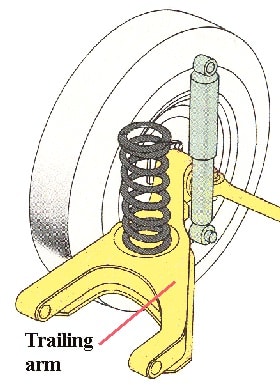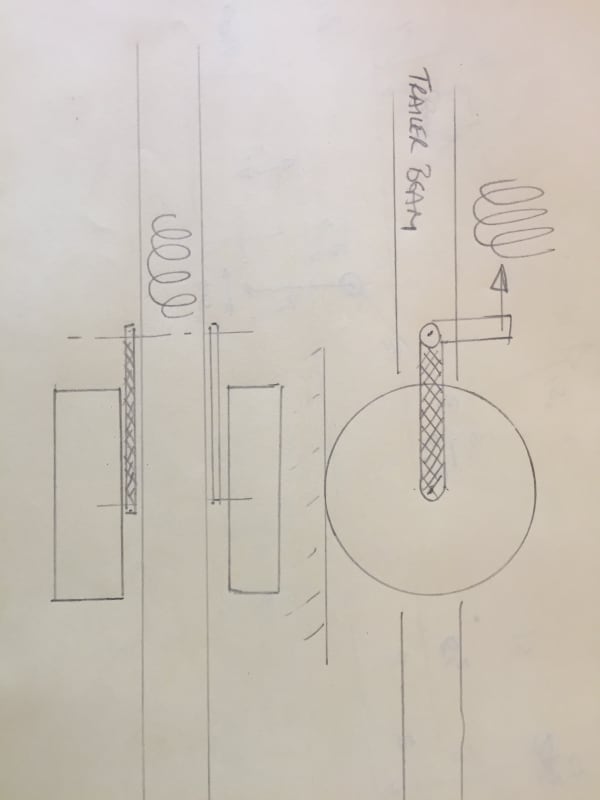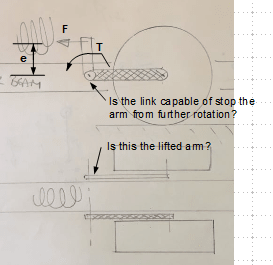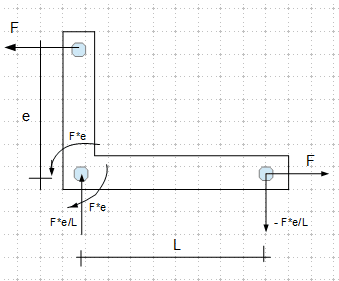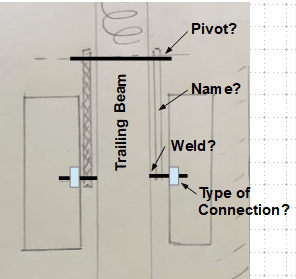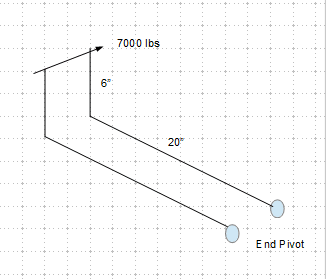Spanish Wells
Agricultural
Hi to all; I wonder if someone could help me please ?
I'm designing / building a trailer using a trailing arm suspension system. My problem is to design the arm to accommodate the torsional stress involved.
The wheel / tire is 32" diameter, 10" wide.
Static load of 4,000 lbs per tire.
The stub axle(inc brakes) will be attached to an arm approx 20" long from axle center to pivot point.
This arm will be a "bell crank" transferring suspension loads to an air bellows suspension.
My problem is to specify the section of the arm to resist the torsion loads.
I want the arm to be as thin as practical to minimize the overall width of the system.
My thoughts are to flame cut the arm/bell crank from A36 structural plate of the appropriate thickness.
Could somebody help with the appropriate formulae so I can look at various sections of the arm,
for example: what width would I need for 1" plate, or 1.5" plate, etc.
I'm thinking I could build a table using Microsoft excel to include all the variables such as: load, g force, twisting moment, length of arm, material thickness, material width, mechanical properties of the steel, etc and play with the section of the arm to give me a good solution.
Appreciate any help.
Bob
I'm designing / building a trailer using a trailing arm suspension system. My problem is to design the arm to accommodate the torsional stress involved.
The wheel / tire is 32" diameter, 10" wide.
Static load of 4,000 lbs per tire.
The stub axle(inc brakes) will be attached to an arm approx 20" long from axle center to pivot point.
This arm will be a "bell crank" transferring suspension loads to an air bellows suspension.
My problem is to specify the section of the arm to resist the torsion loads.
I want the arm to be as thin as practical to minimize the overall width of the system.
My thoughts are to flame cut the arm/bell crank from A36 structural plate of the appropriate thickness.
Could somebody help with the appropriate formulae so I can look at various sections of the arm,
for example: what width would I need for 1" plate, or 1.5" plate, etc.
I'm thinking I could build a table using Microsoft excel to include all the variables such as: load, g force, twisting moment, length of arm, material thickness, material width, mechanical properties of the steel, etc and play with the section of the arm to give me a good solution.
Appreciate any help.
Bob

